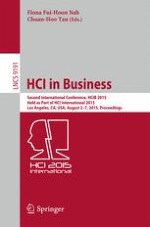2015 | OriginalPaper | Chapter
Vision 2020: The Future of Software Quality Management and Impacts on Global User Acceptance
Authors : Robin Poston, Ashley Calvert
Published in: HCI in Business
Publisher: Springer International Publishing
Activate our intelligent search to find suitable subject content or patents.
Select sections of text to find matching patents with Artificial Intelligence. powered by
Select sections of text to find additional relevant content using AI-assisted search. powered by
